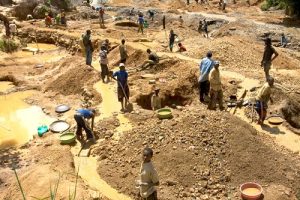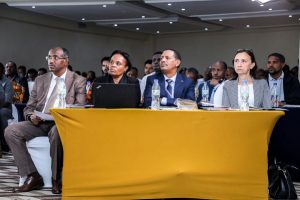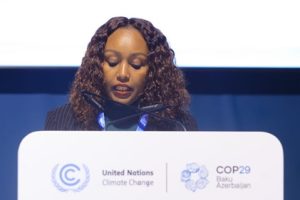
BY EPHREM ANDARAGCHEW
Land degradation refers to the long-term loss of ecosystem services, and it is a major global problem. Studies indicated that the effects of land degradation cover a significant percentage of the global land area and people. The nature of land degradation takes many forms that affect forests, soils, water, biodiversity, the economy,social services,and so on.
Land degradation happens in almost all terrestrial biomes and agro-ecologies, in both developed and developing countries. Nevertheless, the impact is severe for developing countries since they are heavily dependent on natural resources which are vividly seen in Sub-Saharan African countries.
Ethiopia is a populous country in Africa and its economy is highly reliant on agriculture with rain-fed, smallholder farming representing a significant percentage of national agricultural outputs. The country’s agricultural activities are the major cause of forest and land degradation since they require the expansion of agricultural lands and cause overgrazing. Besides, rapid population growth along with fuelwood needs, recurrent droughts, and deep-rooted poverty have been the causes for degradation in Ethiopia’s context.
Hence, taking these facts into account, the government has designed strong economic growth strategies and committed to achieving the ambitious development goals protecting existing forests and restoring degraded lands. Otherwise, land degradation poses a serious threat to the livelihoods of the people.
Policies, strategies, proclamations, programs and plans have been developed to safeguard the country’s forest coverage. If all the measures have been put in place, they would address the conservation and development of forest resources and landscape restoration interventions. Even the country prepares a 10 years plan which helps to restore degraded land and conserve forest resources.
According to Ethiopia Forest Development (EFD), Ethiopia is more committed to realizing land restoration of 22 million ha of degraded lands and forests by 2030.It has also announced that Ethiopia has achieved a five-year project of Re-greening Africa with trees ahead of time.
Recently, a workshop was held under the theme, Re-greening Africa: Inclusive and Evidence-Based Approaches to Accelerating Land Restoration in Ethiopia. Ethiopia Forest Development General Director Kebede Yimam said that Ethiopia’s natural resources have been degrading over time due to various anthropogenic and natural factors.
Hence, efforts have been made to combat these problems through landscape restoration. In order to strengthen these efforts, Ethiopia set an ambitious target of afforesting 22 million ha of degraded lands by 2030 which pledged on the Bonn Challenge and New York Declaration, he explained.
Moreover, Ethiopia has also prepared 10 years National Forest Sector Development Plan, National REDD+ Strategy, National Restoration Mapping, 10 years Bamboo strategy and Action plans including other policy and legal frameworks which are imperative to implement Sustainable Development Goals (SDGs) and a national greening plan, according to General Director Kebede.
Taking European Union funded Regreening Africa project into account,the project has been carried out by a consortium comprising Catholic Relief Services (CRS) as the country-lead NGO, World Vision Ethiopia (WVE) as implementing partner, and World Agroforestry Centre (ICRAF) Ethiopia country office for technical support, Kebede stated.
The aforesaid project has set a target of regreening 200,000 ha of degraded land by reaching out to 120,000 households. In four years, a total of 217,056 ha was put under restoration via reaching out to 156,206 households in Oromia, South Nations Nationalities and People, Amhara, and Tigray State.
Regreening Africa Programme Manager Mieke Bourne told The Ethiopian Herald that through such regreening program, we had been gaining a great lessons such as adapting all types of restoration to a local context, practicing Farmer–Managed Natural Regeneration (FMNR), working with local structure and government to reach out to a very large number of people, bringing behavioral change on how to look at land restoration activities and the like.
According to him, the program has enabled farmers to integrate land restoration with soil and water conservation apart from familiarizing the local community with elements of economic incentives and livelihoods. Besides, the program has created enabling environment to manage overgrazing and integrate information, data, and science from the community perspective, Bourne added.
Indeed, land degradation is not new in Ethiopia, and many initiatives have been applied to restore degraded land with the aim of improving local livelihoods and landscapes while building resilience in the face of climate change.
However, sustaining the initiative has remained as the biggest challenge. Besides, having and developing a land restoration project alone is not enough, it is important to focus on factors that lead to the successful implementation of the project through context-specific bases. For this to happen, identifying the living condition and context of the people is key as it is helpful to know the barriers and opportunities.
THE ETHIOPIAN HERALD TUESDAY 11 OCTOBER 2022





